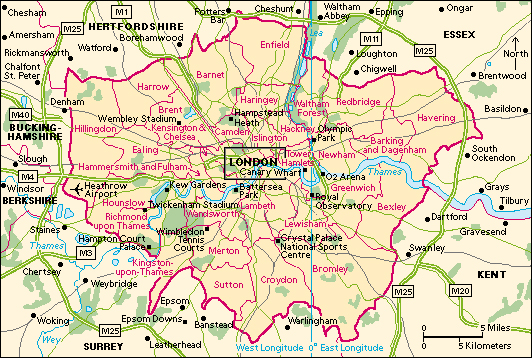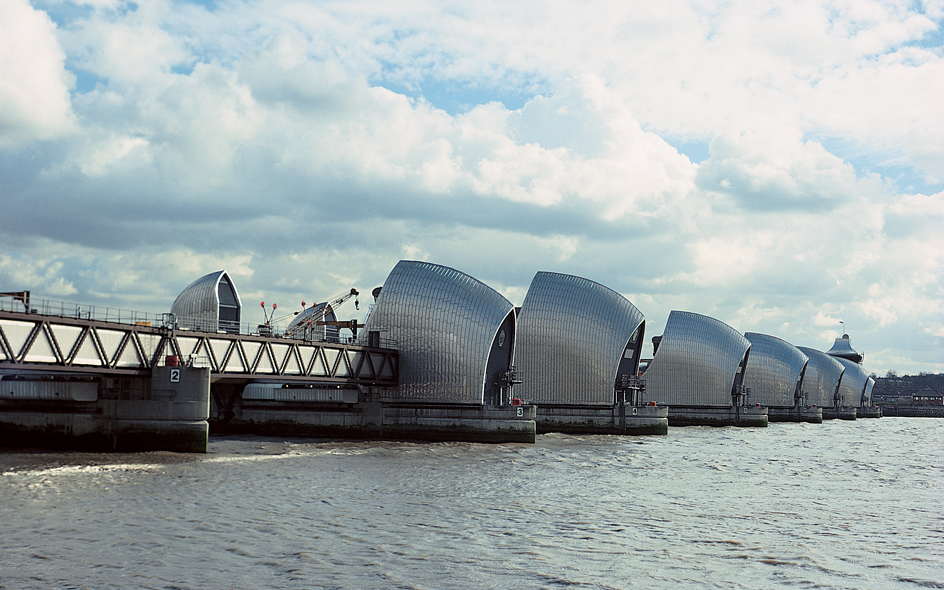Thames, << tehmz, >> River is the most famous and most important river in England. The Thames is also one of the longest rivers in England. The Severn, which lies partly in England and partly in Wales, is about the same length. The Thames flows 210 miles (340 kilometers) from the Cotswold Hills in south-central England to southeastern England, where it empties into the North Sea. Part of the river serves as a major English trade route.

A number of towns and cities lie along the River Thames, including Oxford, Reading, Windsor, London, Tilbury, and Southend-on-Sea. The river winds through the center of London, passing such famous buildings as the Houses of Parliament and the Tower of London. The Thames measures about 5 miles (8 kilometers) wide at its mouth on the North Sea. The sea’s tides affect the lower part of the Thames. The Thames Barrier, built across the river in East London, provides protection against floods.
London owes its origin and much of its importance to the Thames River. In London, industries were established on the banks of the river and the city became England’s most important trading port. The London docks were built on the river during the 1800’s. However, in the 1900’s, most of the shipping activity was moved from London to Tilbury. Most of the old docks have closed. A number of them have been converted into residential areas and commercial building sites. Oil refineries stand at the mouth of the river.

See also London ; London Bridge .
